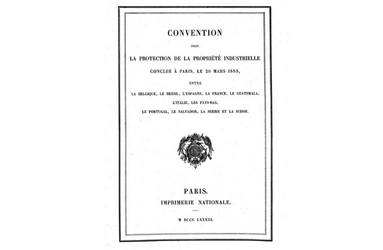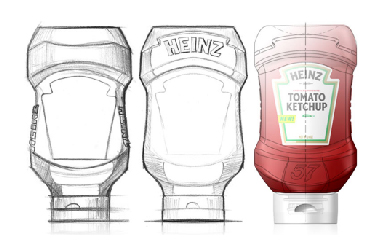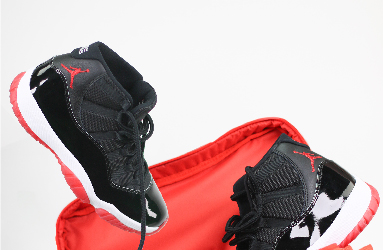Growing Importance of Intellectual Property in the Fashion Industry

Intellectual Property in the Fashion Industry - Introduction
The fashion industry - a dynamic blend of artistry and enterprise—is increasingly acknowledging the importance of intellectual property (IP) as a pillar of success. In today's world, where design and innovation are at the forefront, protecting unique fashion designs, trademarks, and brand identities is more than a mere legal requirement; it's a crucial strategy for business growth. The fashion giants are discovering that effective intellectual property protection isn't just about defending their creations, it's about creating a space where creativity thrives without barriers.
Evolution of Fashion and Intellectual Property
The fashion industry, once primarily focused on creating stylish apparel, has evolved into a dynamic ecosystem where creativity and innovation intertwine with legal considerations. In its infancy, the traditional clothing industry placed minimal emphasis on intellectual property (IP) and brand protection. Designs were fleeting, and the concept of safeguarding creative and such valuable intangible assets, through legal means was relatively unexplored.
However, as the fashion landscape transformed into a global economic powerhouse, the need to protect original ideas became paramount. The evolution from traditional craftsmanship to a complex web of global supply chains and digital platforms necessitated a shift in mindset. Fashion designers and brands began to recognize the importance of securing their intellectual property to establish a unique identity in a crowded market.
This transformation extended beyond mere design protection. Fashion houses started leveraging trademarks as a powerful tool for brand recognition. Logos became iconic symbols of fashion products, representing not just products but entire lifestyles. This shift marked a pivotal moment in the industry's history, signifying a departure from ephemeral trends to a more enduring focus on intellectual property in their entire business strategy.
Intellectual Property Rights Applicable in the Fashion Industry
Trademark Law and Protection
Trademark protection stands as a cornerstone in the fashion industry's efforts to secure its unique identity and build brand equity. In an era where logos and brand recognition hold immense value, many fashion houses recognize trademarks as powerful assets in their intellectual property arsenal. Trademark law safeguards a brand's right to profit, as well as enables consumers distinguish between genuine products and counterfeit products.
Importance of Trademark Registration in Fashion Business
Fashion designers invest substantial resources in creating distinctive logos and symbols. These trademarks serve as visual identifiers, summarizing the essence of a brand and fostering immediate consumer recognition. Establishing a strong trademark not only differentiates a brand in a competitive market but also safeguards it from imitation.
Brand Recognition and Consumer Trust
Iconic trademarks such as the interlocking "C" of Chanel or the swoosh of Nike transcend mere symbols; they embody a brand's legacy and values. Consumers associate these trademarks with quality and authenticity, fostering trust and loyalty. Effective trademark protection ensures that competitors cannot capitalize on the goodwill built by a brand over time.
Challenges in Trademark Protection for Fashion Designers
The fashion industry also faces challenges in maintaining trademark integrity. Counterfeiting remains a persistent issue, with imitations flooding the market. Fashion businesses must actively combat these infringements to preserve both their market share and the perceived value of their trademarks.
Landmark legal battles, such as the clash between Yves Saint Laurent and Christian Louboutin over red-soled shoes, underscore the significance of trademark protection. These cases shape legal precedents and establish the boundaries of creative expression within the industry.
Design Patents in Fashion Brands
Unlike copyrights or trademarks, design patents specifically protect the ornamental or aesthetic aspects of a functional item. In the fashion house, this translates to the unique visual elements that make visual appearance of a garment or accessory distinctive. Design patent protection provides a means for fashion designers to shield their creative endeavors from unauthorized replication.
Challenges
While design patents offer a valuable layer of protection, they come with challenges. The subjective nature of design and the potential for overlap with existing patents can complicate matters. Striking the right balance between protecting innovation and avoiding overly broad patents remains a key consideration.
Role of Design Patents
The integration of design patents into the fashion industry's intellectual property toolkit reflects a commitment to preserving the unique visual language of fashion. As designers continue to push boundaries, design patents offer a tailored solution to shield their creative expressions from imitation and reinforce the industry's culture of innovation.
In an industry where trends often transcend borders, the global implications of design patent protection come to the forefront. Understanding and navigating international design patent law frameworks becomes essential for fashion brands aiming to protect their creations on a worldwide scale.
Copyright Law in Fashion Designs
Copyright law and protection extends beyond traditional artistic mediums, encompassing original works of authorship. In the fashion business, this includes textiles, fabric patterns, and even the overall aesthetic arrangement of a garment. While utilitarian aspects remain outside copyright protection, the creative elements embedded in innovative fabric and fashion design fall squarely within its purview.
In essence, copyright in the fashion industry is a multifaceted tool that safeguards the artistic essence of creations, reinforcing the industry's commitment to fostering innovation and creativity. As the fashion landscape continues to evolve, the role of copyright remains integral in balancing the rights of creators with the industry's dynamic and ever-changing nature.
Trade Secrets Protection and New Business Models
Trade secrets could be from a list of key suppliers/buyers to the application of fashion design and the logistics management of the whole value chain. In some fashion businesses, trade secret serves to safeguard computer-implemented software-defined business models underpinned by a business model based on stealthily speeding to supply a restricted number of necessary fashion products. In Spain the retail fashion chain ZARA uses proprietary IT technology to shorten the production time from the discovery of trends to the delivery.
Unlike patents or trademarks, trade secret protection relies on confidentiality. Fashion companies must implement robust internal protocols to keep critical information confidential. This can involve restricting access to sensitive data, implementing non-disclosure agreements, and employing secure supply chain management practices.
In a globalized industry, where fashion supply chains span continents, core trade secrets serve as important assets, thus, trade secret protection becomes an international concern. Brands operating in multiple jurisdictions must navigate diverse legal frameworks, emphasizing the need for a cohesive global strategy to protect confidential information.


The Impact of Technology on IP in Fashion Industry
Technology's impact on intellectual property (IP) within the fashion industry is nothing short of revolutionary. As the digital landscape continues to evolve, designers increasingly harness innovative technologies such as 3D printing and advanced digital design tools. While these tools enhance creativity and streamline the design process, they also pose challenges in protecting intellectual property.
The advent of e-commerce platforms has expanded the global reach of fashion, but it has simultaneously amplified the risks of brand dilution and spread of counterfeit products. In response, robust online brand protection strategies have become imperative to combat unauthorized use of trademarks and ensure the integrity of a brand's identity in the vast online marketplace.
Furthermore, emerging technologies like blockchain are reshaping supply chain transparency, enabling fashion business to authenticate products and combat counterfeit goods. Despite these advancements, technology also brings forth challenges such as data security concerns for safeguarding trade secrets in the digital realm. Navigating this dynamic intersection between technology and intellectual property has become a pivotal aspect of the fashion industry's ongoing adaptation to the digital era.
Opportunities in the Digital Fashion Landscape
- Global Reach and Accessibility: The digital fashion landscape offers unprecedented opportunities for brands to reach global audiences, breaking down geographical barriers and expanding market reach through e-commerce platforms and social media channels.
- Direct-to-Consumer (DTC) Models: Digital platforms enable fashion brands to bypass traditional distribution channels and establish direct relationships with consumers, allowing for greater control over pricing, product offerings, and customer experience.
- Data-driven Insights: Digital technologies provide valuable data insights into consumer behavior, preferences, and trends. Fashion brands can leverage data analytics to personalize marketing efforts, optimize product offerings, and enhance the overall shopping experience.
- Virtual Try-On and Augmented Reality (AR): Innovations such as virtual try-on and AR technology offer immersive and interactive shopping experiences, enabling consumers to visualize products in real-time and make more informed purchase decisions, reducing return rates and enhancing customer satisfaction.
- Sustainable Fashion Initiatives: The digital landscape provides a platform for promoting sustainability and ethical practices within the fashion industry. Brands can leverage digital channels to raise awareness, communicate their sustainability efforts, and engage with environmentally-conscious consumers, driving positive social impact and brand loyalty.
Challenges and Risks in the Digital Fashion Landscape
- Counterfeit Goods: The digital fashion landscape presents a significant challenge with the proliferation of counterfeit goods. Online platforms make it easier for counterfeiters to sell fake products, undermining the integrity of genuine brands and causing financial losses.
- Intellectual Property Infringement: The ease of sharing and replicating online content increases the risk of intellectual property infringement. Fashion designs, trademarks, and copyrighted materials are vulnerable to unauthorized use, posing a threat to the creative rights and financial interests of fashion brands.
- Consumer Trust and Reputation: Maintaining consumer trust is paramount in the digital fashion arena. Negative experiences such as receiving counterfeit products or encountering fraudulent websites can damage a brand's reputation and erode consumer confidence, leading to decreased sales and brand loyalty.
- Data Privacy and Security: Online transactions and interactions in the digital fashion space generate vast amounts of consumer data. Protecting this data from cyber threats and ensuring compliance with privacy regulations such as GDPR and CCPA are critical challenges for fashion brands operating online.
Sustainable Fashion and IP: Navigating New Frontiers
The push towards sustainable fashion is transforming the landscape of fashion law and IP, as brands traverse the uncharted territories of eco-friendly design. The endeavor to protect innovations, while fostering sustainability, presents an intricate set of challenges and opportunities within the realm of IP law.
Conclusion
In the ever-evolving fashion industry, intellectual property plays a crucial role in protecting creativity and fueling growth. The journey from safeguarding designs and innovations to mastering the digital domain highlights the necessity for comprehensive IP strategies.
As we adopt global perspectives and explore new territories such as sustainable fashion, the significance of IP in preserving the integrity and dynamism of fashion trends is undeniable. Let's commit to promoting a culture where fashion can flourish, underscored by a respect for IP rights and supported by forward-thinking legal frameworks.
With Abou Naja Intellectual Property, we guarantee that you will receive the best professional advice on how to protect your fashion brand. To ensure that your intellectual property rights remain secure, get in touch with us immediately for specialized legal solutions. Write to us at connect@abounaja.com for a complimentary consultation.














































































































